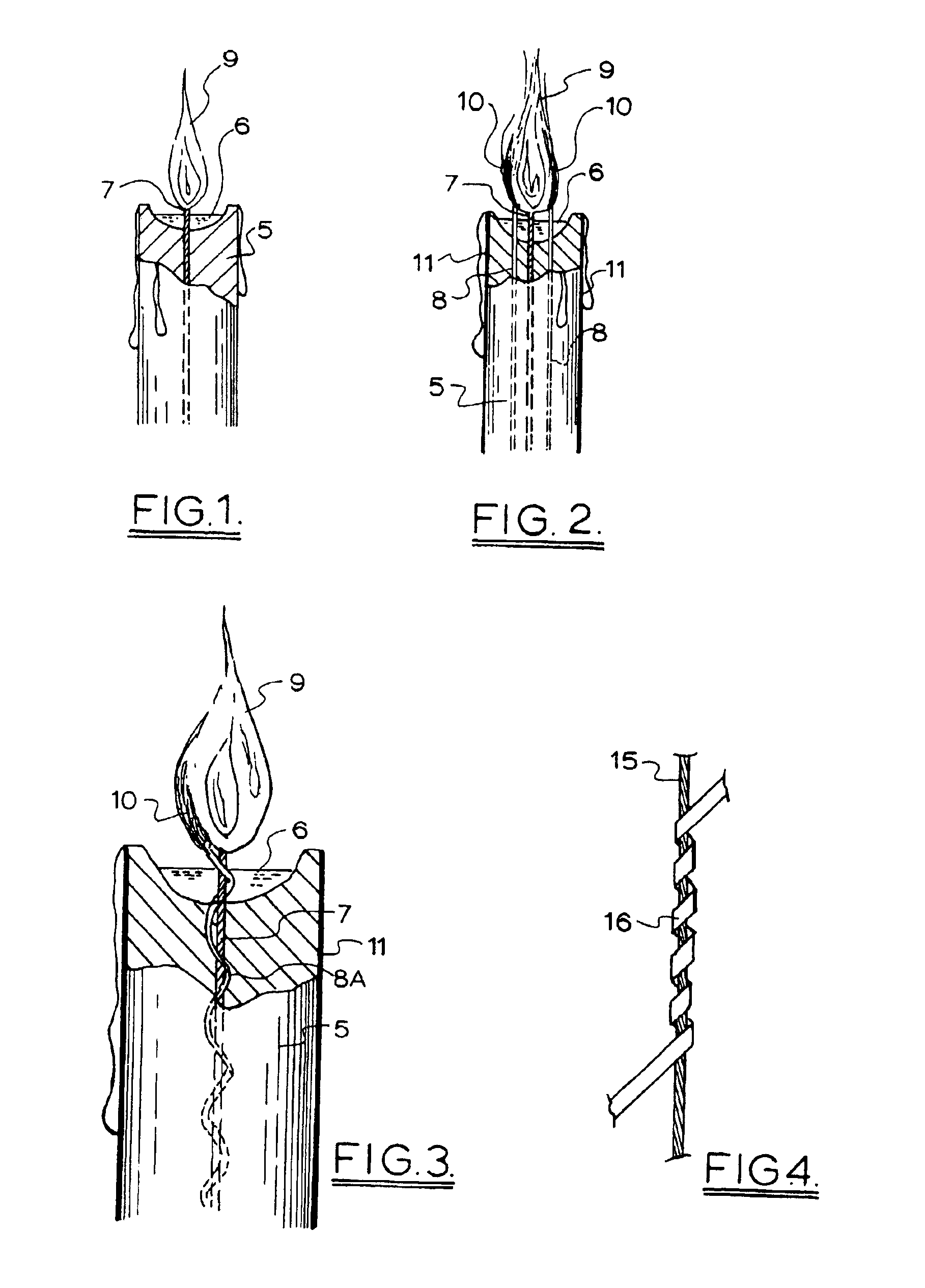Candles with colored flames
a flame and colored technology, applied in the field of candles with colored flames, can solve the problems of insufficient flame temperature, incomplete combustion, and production of fine particulates or soot, and achieve the effects of low soot and noxious gases, and high flame temperatur
- Summary
- Abstract
- Description
- Claims
- Application Information
AI Technical Summary
Benefits of technology
Problems solved by technology
Method used
Image
Examples
first embodiment
[0038]FIG. 2 illustrates a coloured flame candle;
second embodiment
[0039]FIG. 3 illustrates a coloured flame candle;
[0040]FIG. 4 illustrates a method of forming the colourant wick of the FIG. 3 embodiment.
[0041]As shown in FIG. 1 a catering candle or basic version comprises a candle body 5 formed of the solid fuel of this invention. The combustion wick 7 extends through the body 5 of the candle and projects above the melt pool 6 created in the top surface of the candle body 5 by the radiant heat of the flame 9 which extends above the wick 7.
[0042]In FIG. 2 one or more colorant wicks 8 extend parallel to the combustion wick 7 into the hottest portion 10 of the flame 9. It is the portion 10 which becomes coloured by the introduction of the colourant. Where the fuel forming the body 5 is hygroscopic a coating 11 of hydrophobic material such as paraffin is used to protect the body 5.
[0043]In FIG. 3 a variation on the design of FIG. 2 is shown where the colourant wick 8A is spirally wound around the combustion wick 7. As the wick 7 burns the colourant w...
PUM
| Property | Measurement | Unit |
|---|---|---|
| temperatures | aaaaa | aaaaa |
| temperatures | aaaaa | aaaaa |
| temperatures | aaaaa | aaaaa |
Abstract
Description
Claims
Application Information
 Login to View More
Login to View More - R&D
- Intellectual Property
- Life Sciences
- Materials
- Tech Scout
- Unparalleled Data Quality
- Higher Quality Content
- 60% Fewer Hallucinations
Browse by: Latest US Patents, China's latest patents, Technical Efficacy Thesaurus, Application Domain, Technology Topic, Popular Technical Reports.
© 2025 PatSnap. All rights reserved.Legal|Privacy policy|Modern Slavery Act Transparency Statement|Sitemap|About US| Contact US: help@patsnap.com


